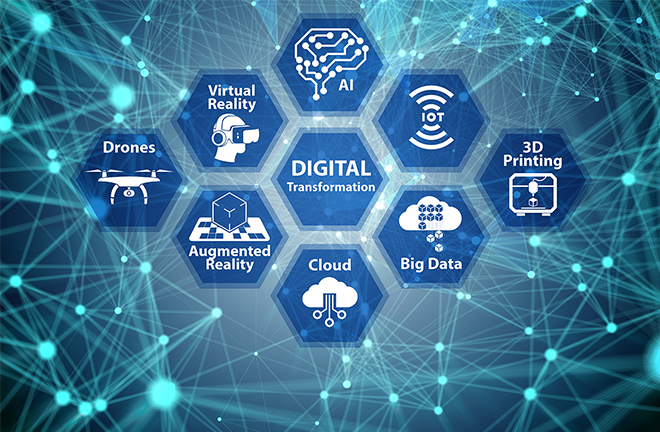Interconnected innovation based on complex networks

The new generation of information technology empowers corporate innovation. Photo: Elnur/TUCHONG
With the rapid development of the new generation of information technology represented by big data, blockchain, and artificial intelligence, traditional innovation theory is no longer adequate to clarify the inherent characteristics of corporate innovation and the underlying motivation behind accelerating innovation. Research at the cutting edge of innovation economics is focused on the revolutionary changes in corporate innovation resulting from the Fourth Industrial Revolution.
This article proposes a new model of corporate innovation termed “interconnected innovation,” which can be delineated as: Multiple distributed agents embedded in the internet, namely businesses, heterogeneous knowledge bodies, and consumers, become extensively connected through their search for target knowledge in a multilateral network, bringing about knowledge evolution underpinned by the new generation of general-purpose information technology, and in turn giving rise to new products, new methods and processes, new services, new algorithms, as well as new organizations and institutions.
While only companies are deemed to be agents of innovation in traditional innovation theory, interconnected innovation integrates multiple agents with knowledge creation capabilities into the knowledge network. A behavioral model of interconnected innovation can be built upon the concept of a complex network: each innovation participant in the market is considered a knowledge node in the network, and nodes are connected through dissemination of information, market transactions, innovation cooperation, and social relations.
Two main mechanisms of corporate innovation are present in the framework of interconnected innovation. First, the small-world network nature of interconnected innovation networks allows for reducing connection costs and enhancing innovation efficiency. The advances in underlying internet technology have provided effective solutions to problems regarding information discovery and sharing, considerably accelerating information and knowledge dissemination and reducing the costs of communication and search. The development of AI, machine learning, and data mining technologies has enabled economic agents to clearly understand what is happening and, to some extent, anticipate what will happen.
Second, the scale-free network nature of interconnected innovation networks is reflected in the preference-based connections of nodes, contributing to a new landscape wherein innovation is led by hub companies. Companies in interconnected innovation networks can be categorized into two groups: hub companies (leading companies) with high degree centrality, and knowledge aggregation hubs with high closeness centrality.
As their preference-based connections evolve, hub companies’ network connections become more centralized, with a more pronounced long-tail distribution. These companies maintain direct cooperation with other companies while also exerting a more extensive influence through technical standards and information sharing platforms. On the one hand, hub nodes and the nodes connected to them often form innovation communities that support and protect small and medium-sized enterprises. On the other hand, the long-tail distribution of hub nodes tends to stifle the innovation of non-hub nodes, resulting in hub nodes monopolizing innovation.
Knowledge aggregation hubs are the favored business partners of other companies. These types of companies engage in cooperative games when they cooperate with other companies in innovation, and enhance their role as innovation platforms. On one hand, they attract more new companies to their platforms and form partnerships. On the other hand, they promote their technical standards and industry standards through collaboration to increase their influence in the industry. In the face of endless technological opportunities in the digital economy, new companies with strong innovation and management capabilities will become highly adaptive nodes in the network and constitute indispensable intermediaries between different nodes through the improvement of adaptive learning ability.
By analyzing the top 500 listed Chinese companies engaged in ICT business during the period of 2015-2020, the author has found that both leading companies and knowledge aggregation hubs in interconnected innovation networks have generated satisfactory innovation output. These companies rely on the internet to search for knowledge. The cost-saving effect and preferential knowledge connections allow them to leverage and integrate a wider range of resources, and thereby innovate based on their own endowment in a dynamic and scalable direction.
An Tongliang (professor) and Jiang Ge (assistant professor) are from the School of Business at Nanjing University. Wei Jie (associate professor) is from the School of Digital Economy and Management at Nanjing University.
Edited by WANG YOURAN
